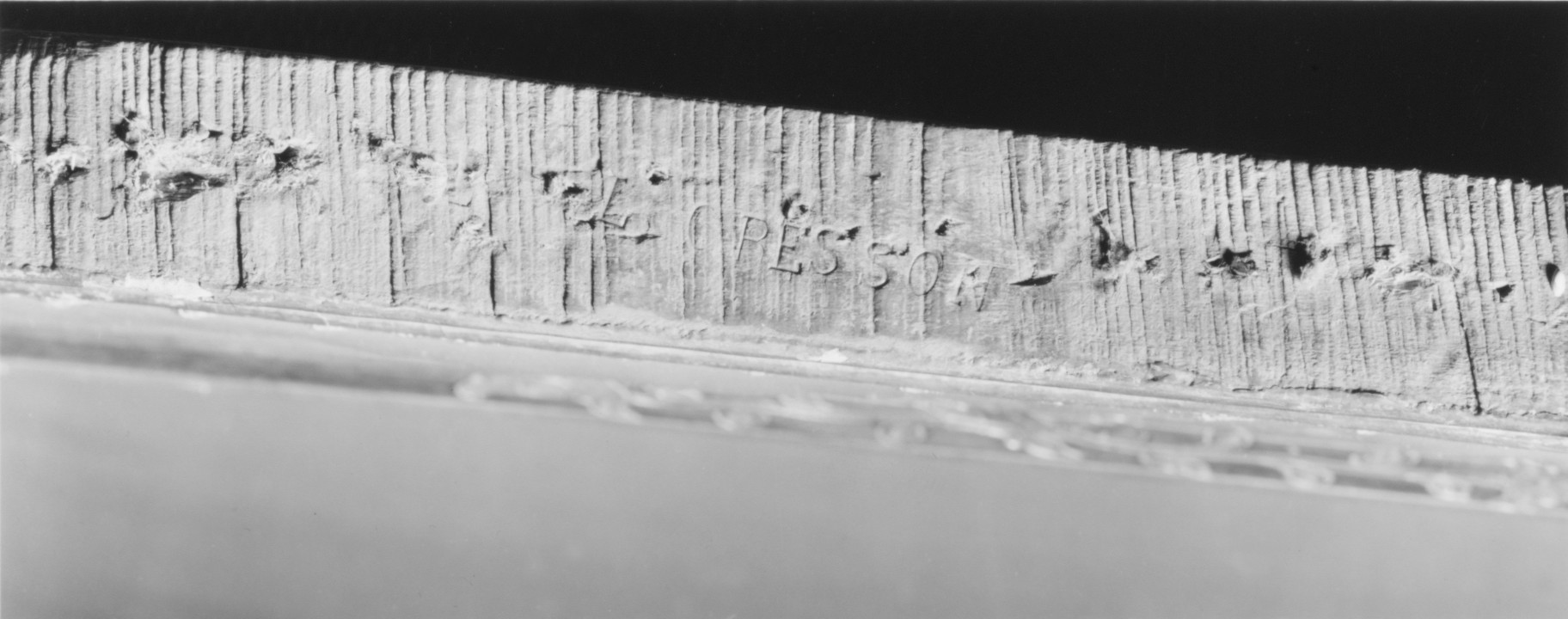Armchair (bergère) (one of a pair)
possibly by Louis I Cresson French
This kind of armchair, upholstered between the arms and the seat, is called a bergère. It was introduced at the beginning of Louis XV’s reign, when furniture became less formal and changed according to the latest fashions, as a more comfortable piece of seat furniture. In fact, the armrests are set back from the front corner of the seat rail to accommodate the newly introduced voluminous dresses called “à panier”. The incised decoration on the outer back of the frame suggests that these chairs were intended to be used in the center of the room rather than to be placed against the paneling as part of the wall decoration.
These bergères were made around 1760, probably by the joiner (menuisier) Louis I Cresson. The mark L.CRESSON is stamped underneath the frame of one of these chairs. It is difficult, however, to attribute this stamp with certainty to a particular member of the Cresson family since ten of them were masters of the Parisian Corporation des Menuisiers-Ébénistes (Parisian Guild of furniture makers) in the eighteenth century, four of whom were called Louis. Famous in Paris, Louis I Cresson’s workshop was called « L’image de Saint-Louis » and among his prestigious clients were the Prince of Condé and the Duke of Orléans. Executed in the rococo style, his armchairs are known for their gilded frames in beechwood carved with flowers and leaf motifs. With their fine and elegant decoration, they are emblematic of Cresson’s work.
Due to rights restrictions, this image cannot be enlarged, viewed at full screen, or downloaded.
This artwork is meant to be viewed from right to left. Scroll left to view more.



